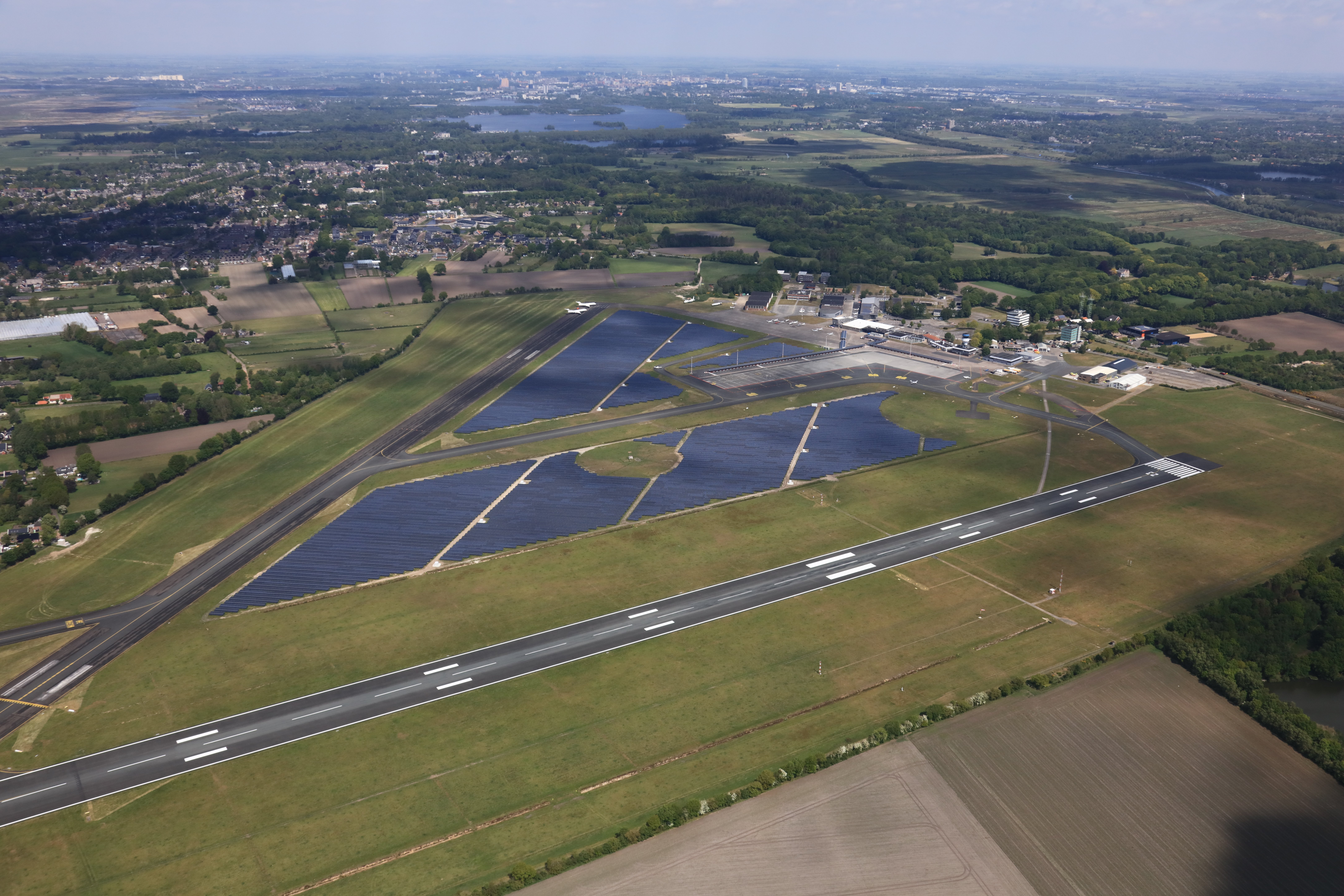
Electric flights are a sustainable and economically feasible alternative to regular flights. Several airports in the Netherlands, including Groningen Airport Eelde, are going to start flying electrically and want to test whether regions in Europe can be connected to each other by means of small planes. “Electric flights are going to become the competitor of the car”, says Meiltje de Groot, director of Groningen Airport Eelde.
The plans for emission-free flights at Groningen Airport Eelde are progressing fast. The airport is part of the Power Up initiative to explore electric aviation and is collaborating with Maastricht Aachen Airport, Eindhoven Airport and Rotterdam The Hague Airport. De Groot answered five questions about the transition to emission-free aviation.

Electric flights within Europe: how can I picture that?
“I see it as a kind of bus stop with connections throughout Europe. Every hour, a small plane, a nine-seater, arrives at a location in Europe. The electric flights will complement the train connections that link up major cities. You can deploy electric flights in places where there are fewer people. It is a completely different concept. I think it will eventually become the competitor to the car.”
“Recently, Maastricht Aachen Airport joined the Power Up initiative. That’s great, the more airports that sign up the better. Traditionally, all airports tend to work together a lot. This is especially important nowadays given that we are facing a major challenge. The climate is under pressure and passengers feel embarrassed about flying. We can do something about this together.”
How long will it take before we all start taking electric flights?
“We should be able to do this within five to ten years. The Eindhoven University and also institutions in the north of the Netherlands have done research into batteries and mobility. There are a lot of developments underway. In the field of solid-state batteries, for one thing. In the future, cars will be able to drive 1000 kilometers without recharging. Aviation is very conservative, so it will take a while longer here. But within Europe, it should be possible to offer electric flights by 2030.”
Research into feasibility of electric aviation
Research carried out in recent months by a project team from the PEN EM Foundation and M3 Consultancy, in collaboration with Groningen Airport Eelde and NewEnergyCoalition, has shown that electric aviation is possible in the near future. “In due course, battery-electric aircraft with approximately 9 to 19 seats will be able to carry out flights of over 500 km. Furthermore, it is expected that hydrogen-powered flights will replace fossil-powered flights. It is expected that in 10 years time, 50-70 seater airplanes will be possible, and 150 seaters in approximately 15 years, will also reach destinations such as Spain with zero emissions. For the longer haul flights, the sector is relying on synthetic fuel made from hydrogen and carbon monoxide, among other thing.”
Besides the fact that flights on electricity and hydrogen are sustainable, there are also some advantages when it comes to noise pollution as well: “Moreover, tests with the first electric aircraft engines show that noise levels are so much lower. Which means that electric aircraft will hardly be heard outside the airport area. These gains are achieved in part because the propellers are able to rotate at lower speeds and more propellers can be used.”

You are also working on making hydrogen-powered flights a reality. How are these plans coming along?
“It is not possible to operate flights on long-haul routes on electricity, for example, to Asia or America. We have to use synthetic fuels for that, such as hydrogen. Airbus has predicted that they will start to fly on hydrogen by around 2040/2050. We are also working on our own plans here at Airport Eelde. We are able to generate hydrogen using our own solar farm.”
Will Airport Eelde be capable of generating all the energy needed for hydrogen-powered flights on its own?
“Yes, we do that with the help of our own solar panels. The idea is to set up a kind of ecosystem revolving around hydrogen. We want to use hydrogen not only for flights but also for handling things around the airport. Thank about, for example, the trolleys that currently run on diesel. We also want to involve other companies in the vicinity in the ecosystem. There is a water treatment company opposite the airport that needs oxygen to purify water. If you generate hydrogen, you also get oxygen, and we can give that same oxygen away to the water treatment company.”
What challenges will aviation face over the coming years in terms of making the transition to sustainable aviation?
“The certification, in particular, is going to be quite a chore. There are an incredible number of laws and regulations in aviation. This is, of course, necessary in view of the risks and safety. I think it’s very important that the government parties, and also those in Brussels, start thinking about this more. On top of that, we also need to think about financing. The government wants to be at the forefront when it comes to electric aviation, but it obviously costs a great deal and in recent years I haven’t seen much happening. I think it’s time that the new coalition agreement states that a bigger budget should be made available for this.”
Read the other articles in this series here.

